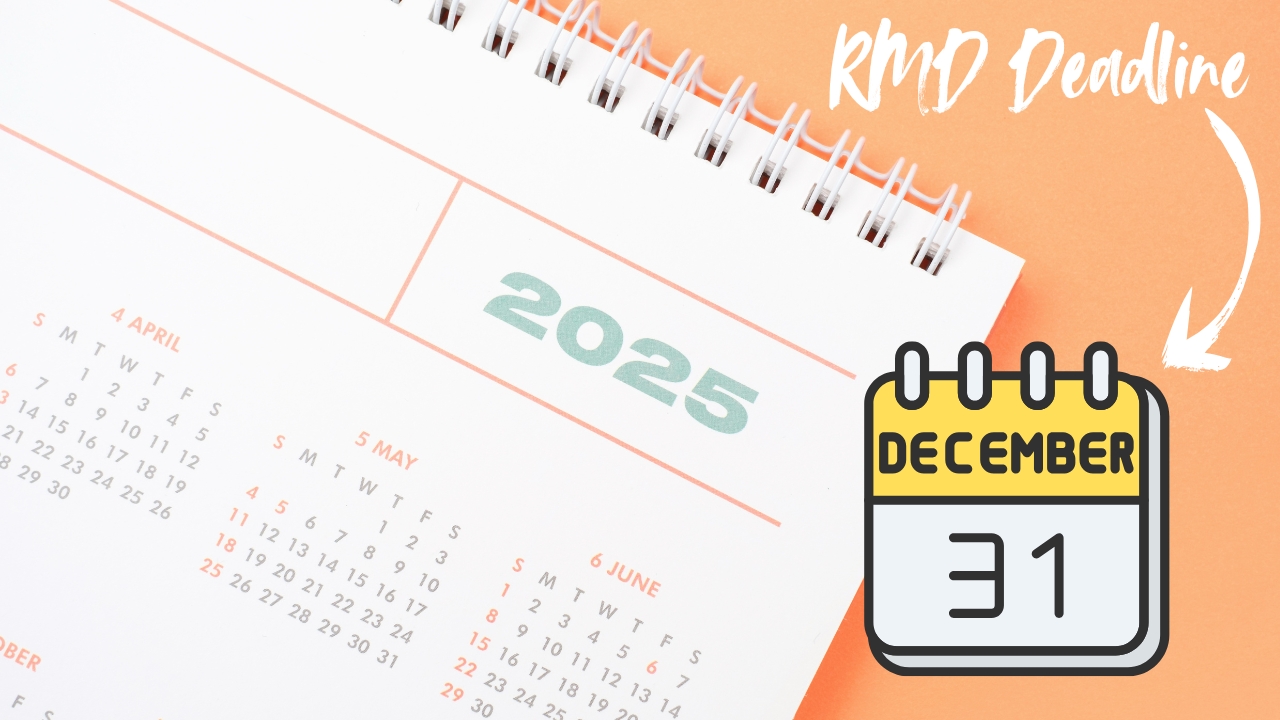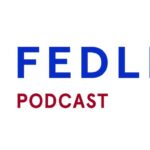
Over the past five years, many federal employees and retirees have inherited IRAs from relatives and friends. But as a result of the passage of the original SECURE Act in December 2019, the IRS rules regarding required minimum distributions (RMDs) from inherited IRAs have changed. With the COVID pandemic in early 2020 and continuing until 2023, Congress was not able to establish the RMD rules for post-December 31,2019 inherited IRAs. The result was that IRA beneficiaries who inherited IRAs since January 1,2020 have not been required to take RMDs from their inherited IRAs for the years 2020 through 2024.
With the passage of SECURE Act 2.0 in late December 2022, Congress passed into law the RMD rules for post-December 31,2019 inherited IRA. In 2024, the IRS announced that starting in 2025, post-December 31,2019 inherited IRA beneficiaries have to take RMDs. The SECURE Act 2.0 RMD rules are complex and are reviewed in this column, focusing on IRAs inherited after December 31, 2019. IRAs inherited before January 1,2020 continue to use the pre-SECURE Act RMD rules.
The rules for post-December 31,2019 inherited IRA RMDs depend on the type of beneficiary. Under the SECURE Act rules, there are three categories of beneficiaries: (1) non-designated beneficiaries (NDBs); (2) non-eligible designated beneficiaries (NEDBs); and (3) eligible designated beneficiaries (EDBs). Each beneficiary category is discussed with respect to RMDs.
Non-Designated Beneficiaries
Who is a non-designated beneficiary (NDB)? An NDB is a non-living entity. This includes an estate, a charity or a trust that does not meet the “see-through” rules. RMDs for NDBs depend on whether the IRA owner died before, on or after his or her required beginning date (RBD). The RBD is currently April 1st following the year the traditional IRA owner becomes age 73. This applies to any traditional IRA owner born between January 1,1951 and December 31, 1959. For traditional IRA owners born after December 31,1959, the RBD is April 1st following the year they become 75.
If the IRA owner died with a traditional IRA before his or her RBD or with a Roth IRA at any age, then the inherited IRA must be emptied by the end of the fifth year following the year of death. Annual RMDs are not required during the five-year period.
If the IRA owner died on or after his or her RBD, then RMD payments are made over the remaining single life expectancy of the deceased IRA owner, as if the IRA owner had lived. This is often called the “ghost rule.” The question then becomes: How are “ghost rule” RMDs calculated? The first RMD for the year following the year of the owner’s death is based on the IRA owner’s life expectancy factor under the IRS’ Single Life Expectancy Table in the year of death minus 1.0. The RMD is the prior-year December 31 account balance divided by that factor. Subsequent year RMDs are based on the prior year’s factor minus 1.0. The following example illustrates:
Example 1. Joseph died in 2024 at age 83 and left his IRA to his estate. Paul, Joseph’s son, is the sole estate beneficiary. Since the estate is an NDB and Joseph died after his RBD, the “ghost rule” applies. The first RMD, payable to Paul through the estate in 2025, is the December 31,2024 IRA account balance divided by 8.3, Joseph’s remaining life expectancy from the Single Life Table in the year of death. This is 9.3 for an 83-year-old minus 1.0. The 2026 RMD uses a 7.3 life expectancy factor.
Note that if an IRA owner fails to name a beneficiary on the IRA beneficiary form, the default beneficiary is the estate. The result is that RMD payments may be made over a shorter period than would apply if an individual were named on the beneficiary form. This depends on the beneficiary named. Payments may be made over a 10-year period or the beneficiary’s life expectancy. It is also important to be careful with Roth IRAs. When a Roth IRA owner dies without a designated beneficiary, or names an NDB as the beneficiary, then the five-year rule applies, regardless of how old the Roth IRA owner was at death.
Non-Eligible Designated Beneficiaries
Who is a non-eligible designated beneficiary (NEDB)? NEDBs are living beneficiaries who are not eligible designated beneficiaries (EDBs) (see below who is considered an EDB).
NEDBs are subject to the “10-year rule”. The “10-year rule” requires that an inherited IRA be withdrawn completely by December 31 of the tenth year following the death of the IRA owner. Furthermore, under the 2022 IRS proposed RMD regulations, the IRS stated an NEDB who inherits a traditional IRA and who died on or after his or her RBD must also take RMDs during years one through nine of the 10-year period.
The question then becomes; how do NEDBs who inherited traditional IRAs after December 31,2019 calculate their annual RMDs during years one through nine following the year of death of the traditional IRA owner? The IRS has ruled that for NEDBs who inherit traditional IRAs in 2020 or later, the first RMD is due in the year following the traditional IRA owner’s death. That RMD is the prior year December 31 traditional IRA balance, divided by the single life expectancy factor of the NEDB under the IRS Single Life Table. This single life expectancy is based on the NEDB’s age on his birthday in that first year – the year after the death of the traditional IRA owner. Annual RMDs for succeeding years are the prior-year’s single life expectancy factor minus 1.0.
However, the RMD calculation is more challenging for those NEDBs who inherited traditional IRAs between 2020 and 2023. This is because the IRS waved annual RMDs within the 10-year period until January 1, 2025. Starting January 1, 2025, NEDBs are required to take RMDs, even though for the years 2020 – 2023 they did not have to take MRDs. Any waved RMDs do not have to be made up. The following example illustrates:
Learn more about your retirement benefits at our No-Cost webinars, featuring Ed Zurndorfer -
Example 2. Phyllis inherited a traditional IRA from her mother, Anna, who died in 2022 at the age of 79. In 2023, the year after Anna’s death, Phyllis was age 55. As an NEDB, Phyllis is subject to the 10-year rule and must withdraw the entire inherited traditional IRA by December 31, 2032. Since Anna died after her RBD, Phyllis must take annual RMDs for the years 2025-2031. Note that RMDs for the years 2023 and 2024 were waived. Phyllis calculates her first inherited traditional IRA RMD for 2025 and subsequent RMDs s follows:
Step 1. Determine Phyllis’ baseline life expectancy factor when she was age 56 (her age on her 2023 birthday). That factor (Single Life Expectancy Factor) is 30.6. 30.6 less 2 (years) equals 28.6.
Step 2. Determine the December 31,2024 traditional IRA balance. Suppose it is $325,500.
Step 3. Divide Step 2 by Step 1:
$325,500/28.6 = $11,381
The $11,381 is Phyllis’ 2025 inherited traditional IRA RMD.
For 2026, the same process but with the life expectancy factor of 30.6 less 3.0, or 27.6. December 31, 2025, traditional IRA account balance is used in the RMD calculation.
Note the following with respect to inherited IRAs with NEDBs:
- The IRS’ waiver of 2020 -2023 inherited IRA RMDs was welcome news to most traditional IRA NEDBs. However, the tax effect of these waived RMDs may not be so welcomed. NEDBs will have a compressed period, between five and 10 years, to withdraw the entire inherited traditional IRA. Taking just the minimum annual RMD during each of the remaining years of the 10-year period could result in a large balloon payment at the end of year 10, and a large federal tax liability and state tax liability.
- Inherited Roth IRA NEDBs do not have to take annual RMDs. This is the case no matter when the IRA owner died. As a result, Roth IRA NEDBs are encouraged to delay withdrawal of the inherited Roth IRA until the end of year 10 in order to maximize the tax-free growth of the Roth IRA.
Eligible Designated Beneficiaries
Who is an eligible designate beneficiary (EDB)? They are individuals in one of the following categories: (1) A surviving spouse; (2) A minor child of the IRA owner until the child becomes age 21; (3) An individual not more than 10 years younger or older than the IRA owner; (4) A chronically ill person; or (5) A disabled person under the strict tax code definition.
An EDB can stretch RMDs over his or her single life expectancy. But a special rule applies if an EDB inherited a Roth IRA or a traditional IRA from a traditional owner who died before his or her RBD. In those cases, the EDB can elect the 10-year rule instead of the single life expectancy, or “stretch” rule.
The question becomes: Why would an EDB elect the 10-year rule rather than the single life expectancy for an inherited traditional IRA in which the IRA owner died before his or her RBD? The following are two possible reasons: (1) With a single life expectancy (lifetime “stretch”), the annual RMDs are required with an inherited traditional IRA. No RMDs are required with the 10-year rule; and (2) If the EDB inherited a traditional IRA from a younger traditional IRA owner who died before his or her RBD, then the EDB can use the deceased traditional IRA owner’s life expectancy which results in smaller RMDs.
The question then becomes: How are “stretch” RMDs calculated?
For non-spouse EDBs, the first RMD for the year after the year of death is the prior-year December 31 account balance. This divided by the EDB’s life expectancy under the IRS’ Single Life Expectancy Table (which is based on the EDB’s age the year after the death of the IRA owner). Subsequent year life expectancy factors are the prior year’s factor minus 1.0. The following example illustrates:
Example 3. Suzanne, age 64 in 2024, inherited a traditional IRA from her brother, Richard, who died at age 71. Suzanne is an EDB and can stretch RMDs over her lifetime. Suzanne’s first RMD for 2025 is based on the life expectancy factor for a 65-year-old (Suzanne’s age in 2025) and the December 31, 2024 inherited traditional IRA balance.
The inherited traditional IRA balance on December 31,2024 equals $175,200.
Single life expectancy factor for a 65-year-old equals 22.9
$175,200/22.9 = $7,657 (2025 RMD)
The 2026 RMD would be calculated using the December 31,2025 traditional IRA balance divided by 21.9 (22.9 minus 1.0)
Suzanne could elect the “10-year” rule and withdraw the entire inherited traditional IRA balance by December 31,2035 with no annual RMDs during the 10-year period.
Surviving Spouse EDBs
A surviving spouse EDB has two advantages over nonspousal EDBs when it comes to inheriting an IRA. The first advantage is that a surviving spouse can treat the inherited IRA as their own by distributing it to their own IRA. In doing so, the surviving spouse can delay RMDs until they reach their RBD. This will allow the surviving spouse to use the IRS’ Uniform Lifetime Table to compute their RMD. The Uniform Lifetime Table has a larger life expectancy factor at each age compared to the Single Lifetime Factor Table, resulting in a smaller traditional IRA RMD and less federal and state tax liabilities. However, a spousal retirement plan distribution is usually not recommended until the surviving spouse becomes age 59.5. This is because the 10 percent pre-age 59.5 early withdrawal penalty applies to one’s own traditional IRA but not to an inherited traditional IRA.
The second advantage for a spouse EDB is that if the deceased traditional IRA died after December 31, 2023 (or died before January 1, 2024, but would not have turned age 73 until after December 31, 2023) the spouse can calculate RMDs using the spousal beneficiary’s own age and the IRS’ Uniform Lifetime Table, instead of the Single Life Table. This should result in smaller RMDs and likely less taxable income.
Contributions to a traditional IRA may be tax-deductible depending on the taxpayer’s income, tax-filing status, and other factors. Withdrawal of pre-tax contributions and/or earnings will be subject to ordinary income tax and, if taken prior to age 59 1/2, may be subject to a 10% federal tax penalty. RMD's are generally subject to federal income tax and may be subject to state taxes. Consult your tax advisor to assess your situation. The case studies/examples are for illustrative purposes only. Individual cases will vary. Any information is not a complete summary or statement of all available data necessary for making an investment decision and does not constitute a recommendation. Prior to making any investment decision, you should consult with your financial advisor about your individual situation.
Edward A. Zurndorfer is a CERTIFIED FINANCIAL PLANNER™ professional, Chartered Life Underwriter, Chartered Financial Consultant, Chartered Federal Employee Benefits Consultant, Certified Employees Benefits Specialist and IRS Enrolled Agent in Silver Spring, MD. Tax planning, Federal employee benefits, retirement and insurance consulting services offered through EZ Accounting and Financial Services, and EZ Federal Benefits Seminars, located at 833 Bromley Street - Suite A, Silver Spring, MD 20902-3019 and telephone number 301-681-1652. Raymond James is not affiliated with and does not endorse the opinions or services of Edward A. Zurndorfer or EZ Accounting and Financial Services. The information has been obtained from sources considered to be reliable, but we do not guarantee that the foregoing material is accurate or complete. While we are familiar with the tax provisions of the issues presented herein, as Financial Advisors of RJFS, we are not qualified to render advice on tax or legal matters. You should discuss tax or legal matters with the appropriate professional.

Ed Zurndorfer, EA, ATA, CFP®, CLU®, ChFC®, CEBS®, ChFEBC℠: Federal Employee Benefits Expert
A former career Federal employee, Ed has published a staggering 1,200+ separate articles on Federal Benefits and Retirement!
Just “Google” his name, and you are likely to find a plethora of sites that contain his writings. Drawn to its mission to reach, teach
and serve Feds, Serving Those Who Serve is the only financial planning practice with which Ed has chosen to affiliate in over
20 years teaching. In addition to conducting Federal Benefits seminars for Serving Those Who Serve, you can find Ed’s
writings here on our blog in the FedZone, and on Fed-Soup, MyFederalRetirement, FederalNews Radio and NITP.
He is a member of the Maryland Society of Accountants, the National Association of Enrolled Agents, the International Society of Certified Employee Benefits Specialists, the Financial Planning Association, the National Association of Health Underwriters,
and the Society of Financial Service Professionals. Since 1999, Ed has taught many thousands of Federal employees about
their benefits, in person and at Federal agencies all over the country. Ed is a true national treasure.
Edward A. Zurndorfer is a CERTIFIED FINANCIAL PLANNER™ professional, Chartered Life Underwriter, Chartered Financial Consultant, Chartered Federal Employee Benefits Consultant, Certified Employees Benefits Specialist and IRS Enrolled Agent in Silver Spring, MD. Tax planning, Federal employee benefits, retirement and insurance consulting services offered through EZ Accounting and Financial Services, and EZ Federal Benefits Seminars, located at 833 Bromley Street - Suite A, Silver Spring, MD 20902-3019 and telephone number 301-681-1652. Raymond James is not affiliated with and does not endorse the opinions or services of Edward A. Zurndorfer or EZ Accounting and Financial Services. The information has been obtained from sources considered to be reliable, but we do not guarantee that the foregoing material is accurate or complete. While we are familiar with the tax provisions of the issues presented herein, as Financial Advisors of RJFS, we are not qualified to render advice on tax or legal matters. You should discuss tax or legal matters with the appropriate professional.


